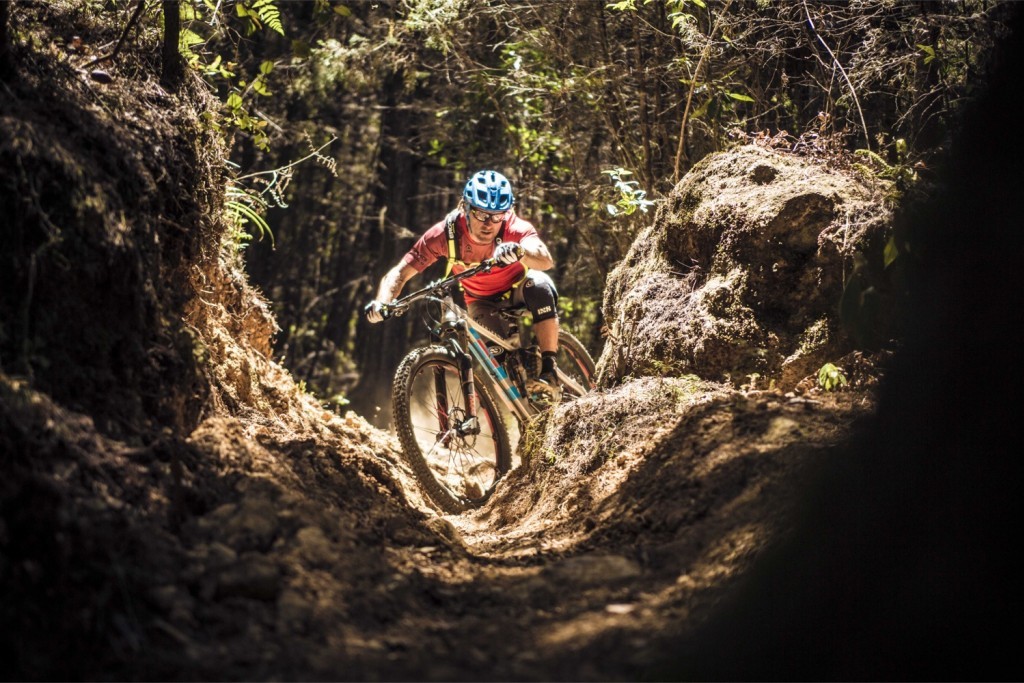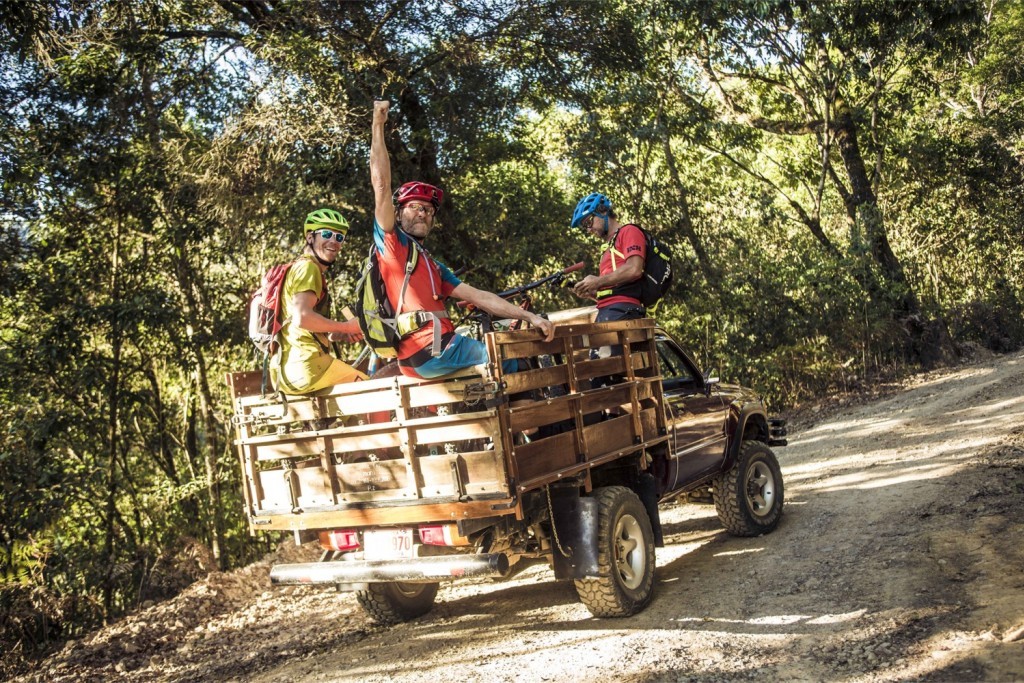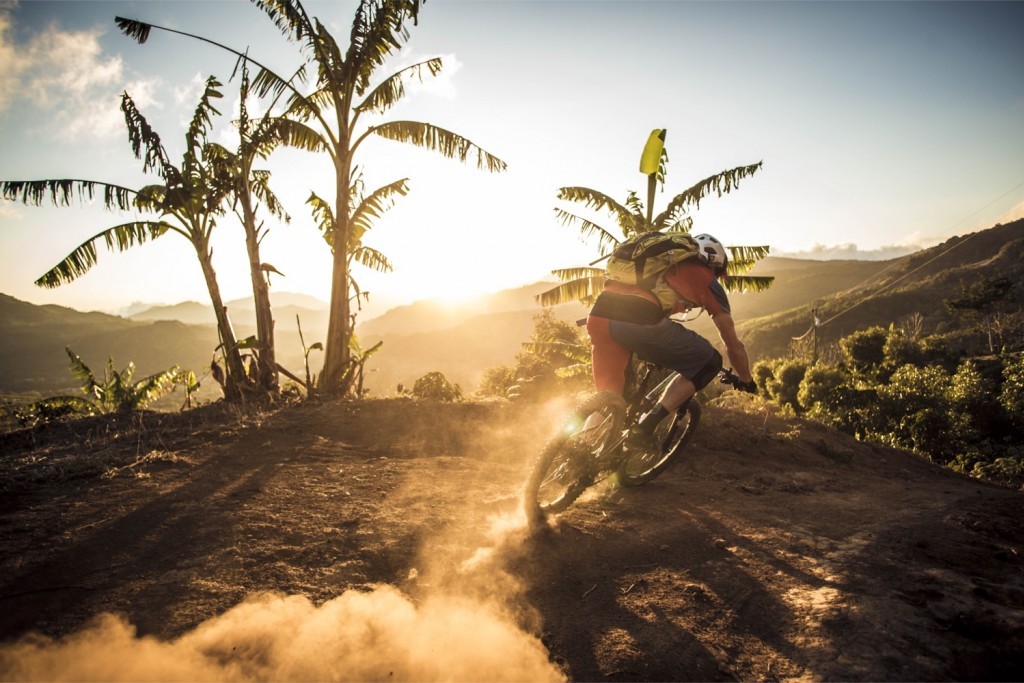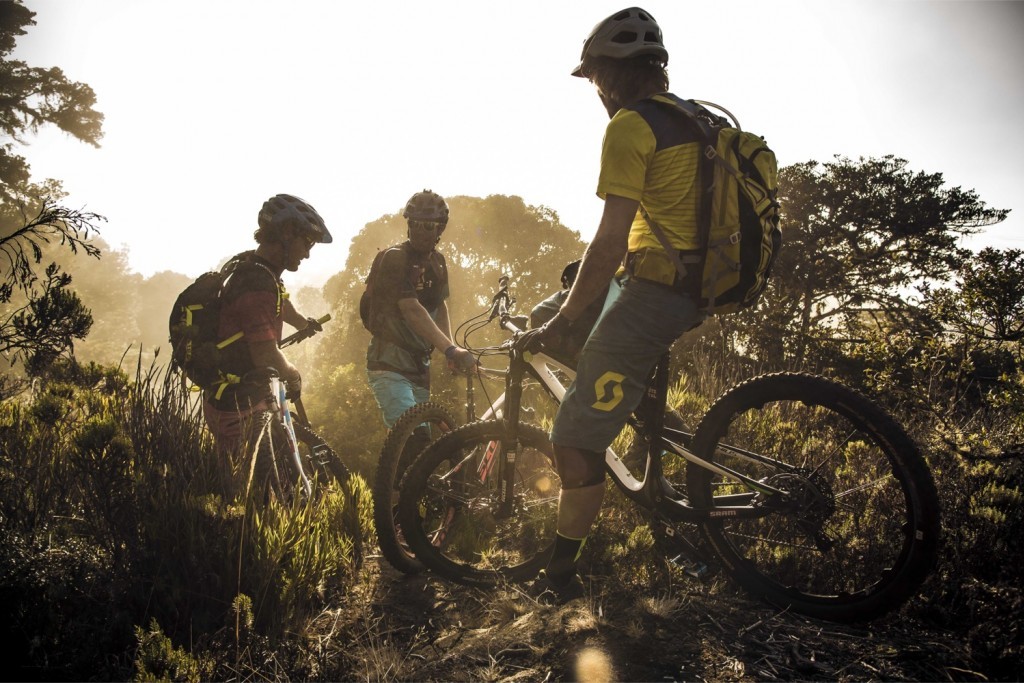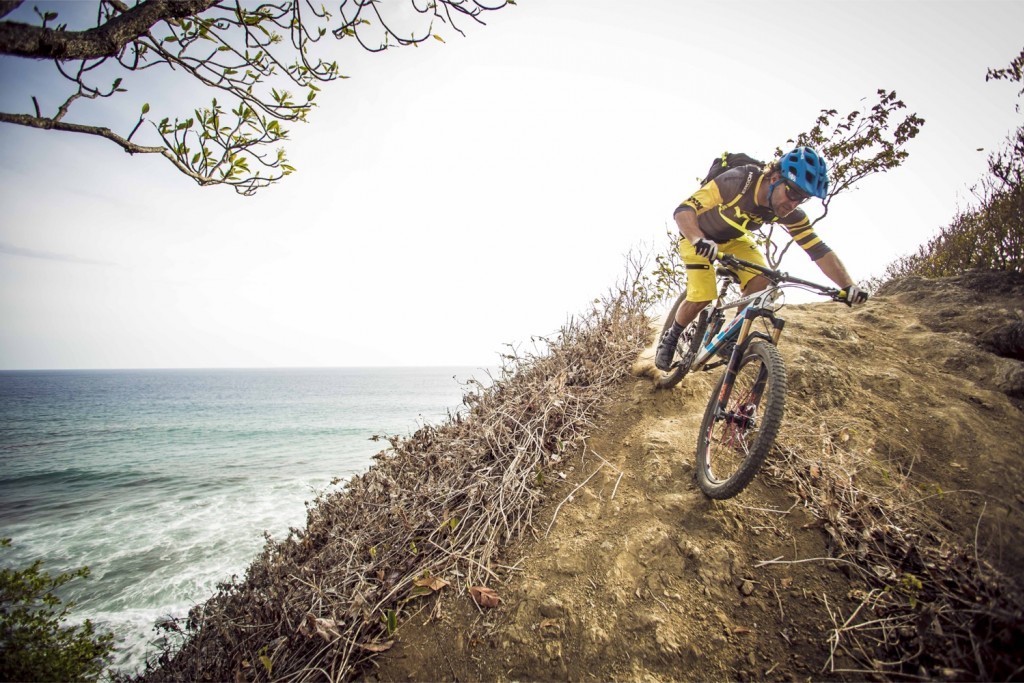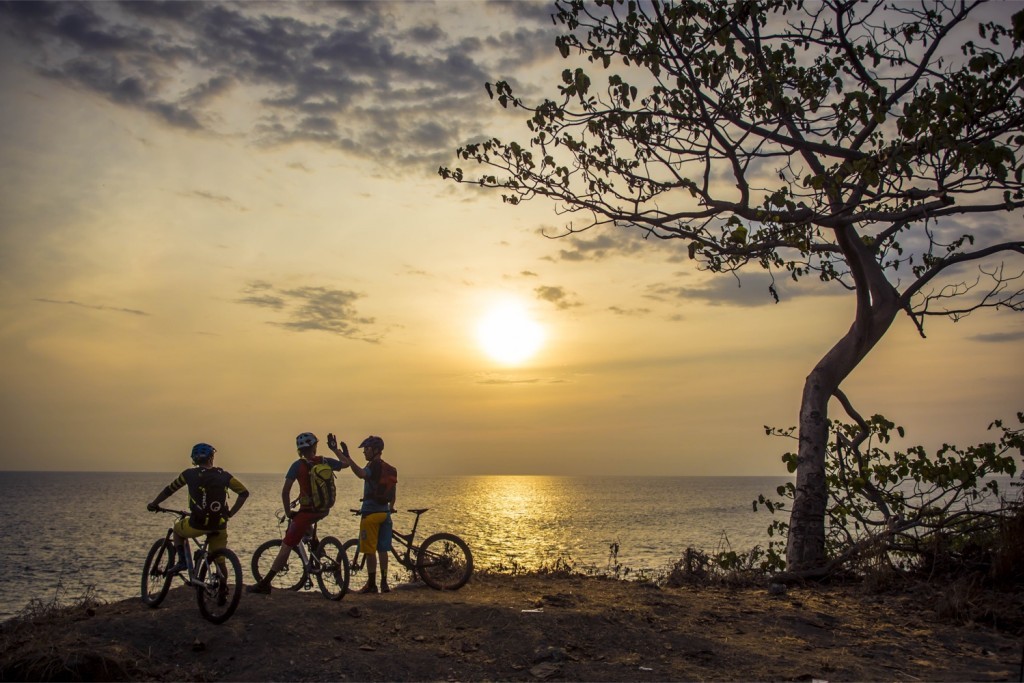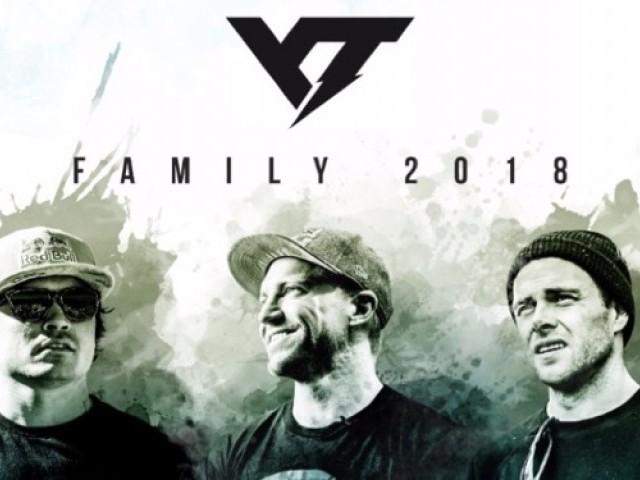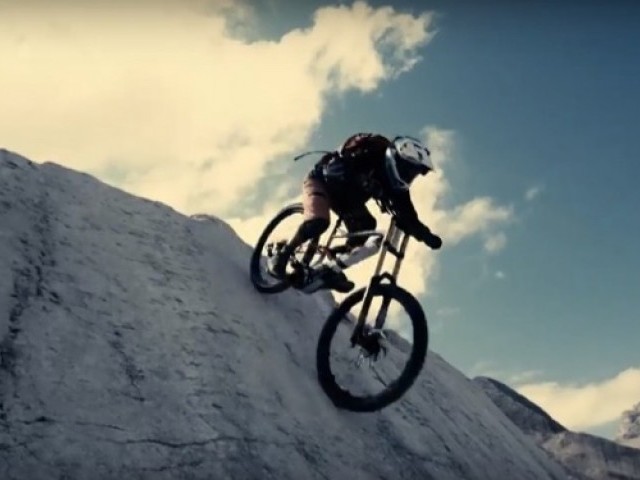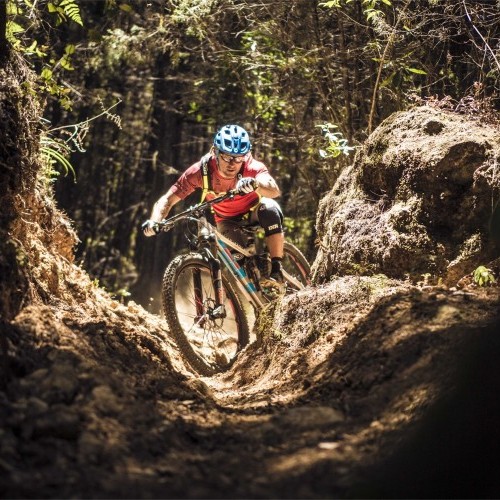
Central America’s Hidden MTB Gem
Wed 8th Feb, 2017 @ 3:30 am

Win a GO3 Camera by Insta360 this issue in our FREE subscriber prize draw.
Epic views and majestic riding all day long! Join Richie Schley and Holger Meyer on a journey through Costa Rica, where they found pure trail madness. The locals have been digging and working on the trails for quite some time and established a trail network that leads all the way from the highest mountains to the sea. Stunning doesn’t come close!
La Pura Vida
Words: Holger Meyer
Photos: Sebastian Doerk
It’s Pitch Black, Something Must Be Up With The Time Zone
A man tugs at my bag: “Taxi?” There’s a hectic bustle going on at San José’s airport exit. It’s 3:00am, yet our ticket says that we weren’t supposed to land until 7:00am in Costa Rica’s capital. If that were the case, the sun would be out and our guide would be here to pick us up. Instead we’re standing around, completely lost, hardly able to keep our eyes open and trying to keep the men shouting “Taxi, Taxi” at bay. An athletic looking guy wearing a baseball cap and bike shorts is making his way through the crowd towards us. It must be him. He looks as tired as us but laughs and stretches out his hand. It is him- Paulo, our guide. When we finally put our bags in his pickup, the Costa Rican explains that it was just by chance that he checked our arrival time online again before going to bed and saw that our flight would land four hours earlier.
“Breakfast?” Paulo asks as he rummages around in his rucksack with his right hand without taking his eyes off the traffic. He hands us a container of freshly cut mango. Wow, did he really prepare this especially for us…? Paulo laughs at this: “No, I stole them from my father’s fridge.”
Freeride legend Richie Schley persuaded us to take this trip to Costa Rica. Tobi Geißler, Sebastian Doerk and I were quite easily convinced. It’s the beginning of March and after a 14 hour flight, the prospect of being able to spend a week in summer swimming is simply too much to resist.
The next morning Paulo picks us up from the hotel for our first bike trip. Now, in daylight, I realise there’s not a single promotional sticker on his pickup. Strange, since he makes a living from the bike business and was both cross country and downhill national champion. Paulo doesn’t seem to want to talk about it. He just lowers his head and carefully pulls the tarpaulin over our bikes. Viewed from the outside, the car could quite easily be loaded with bananas.
The journey takes us 2,500 metres above sea level. An old farm road leads us through ancient mountain villages, past stables with horses and chickens, to a scenic overlook. Here Paulo manoeuvres his car halfway into the bushes and stops. The view stretches out over green hills with a few meadows in between and, of course, coffee plantations as far as the eye can see. Just in the distance, on the horizon, the pacific shimmers in the sun. But where is the trail? We follow Paulo through a thicket that doesn’t look at all like an entrance for a trail. For five or six metres we trudge through thick undergrowth until we reach what looks at first to be a hollow in the ground but then is clearly recognizable as a path.
We hurtle through a green tunnel of ferns and climbing plants that hang from the roof of the jungle trees and seem to be trying to constantly grab us. The ground is surprisingly bone dry with a good grip – the rainy season doesn’t begin until April. We are able to simply fly over the otherwise slippery roots. But after ascending a few hundred metres we have to stop to loosen our hands.
Paulo is delighted that we’re having such a great time on his “baby” – his new trail. And he’s got much more to show us. Even if the ground on which they are located doesn’t belong to him. Just 200 kilometres wide, the country between the Caribbean and the Pacific is a mixture of national park and privately owned land. That’s pretty small for trail-loving bikers. But as a former member of the Costa Rica national team, Paulo is known all over the place. People trust him when he says: I’m building a trail on your land and am only going to take selected people on it. That’s the reason for the inconspicuous car, the secrecy and the hidden trail entrance. We continue on through the undergrowth. The curves get narrower, the temperature and humidity rises, sweat flows. Twice we have to traverse a river and then the ride ends at a coffee plantation. From here we roll to a small restaurant next to a waterfall. Naturally we make use of the time, before our food arrives, to enjoy an outdoor shower.
Paulo’s next pride and joy is a trail further south of the country, in Providencia. We’ve barely gotten out of the truck and we’re lost again in a mixture of jungle, dust and hairpin bends. A few steep ledges and roots block the way. We stop for a moment in the clearing. It’s similar to Germany: open meadows amid forests and undulating terrain – a little bit of the Black Forest in the middle of Central America. The trail winds slowly out of the valley. There’s not a soul in sight. Then all of a sudden a man is standing in front of us with a machete. He looks fierce, until he recognizes Paulo. It’s Marinho, the landowner. He knows that we are coming. We’ll be spending the night later at his place in a cabana, a small wooden hut on his farm. Marinho just came ahead in order to clear the trail for us. When we reach the hut, his wife has cooked a delicious meal of tortillas with rice and beans for us.
After a descent on one of Paulo’s favourite trails which is similar to that of a bobsleigh run, we push on further south towards the pacific. “My dream is a trail from the highest peak, the Cerro Chirripó, down to the beach. Which would be a 3,820-metre descent!” explains Paulo as he revs his 4-wheel drive with tremendous effort up the sandy track. We are very happy when we reach the next spot: the Dota Valley, an idyllic valley with a river, small wooden huts, and an unbelievable amount of birds. The toucan with its huge beak flutters through the trees and a cloud of hummingbirds are startled as we approach the wooden terrace of our lodge. It’s the perfect place for a margarita. Costa Rica also has a Caribbean aspect and the best trails can be found here. That’s why we decided to ride the pacific side.
When we arrive in Hermosa Beach we can’t believe our eyes: a huge beach with dark sand, a pair of palm trees, a hammock, a surfing spot right in front of our hotel – and no people! As if this paradise weren’t enough, there is also a trail park right above us. Our last day begins with a morning of surfing. This is followed by a ride over beautiful, rooty trails through a jungle right next to the beach. José, the hotel guide only manages to lure us out of our hammock one afternoon to do a crocodile tour. We chug up the river in a small boat. José steers the boat while his colleague Jimmy holds a bucket of chicken. It doesn’t take long before the first “tree trunks” appear in the water. Then Jimmy jumps overboard in the knee-high water and immediately jaws bearing rows of long teeth begin to open. Jimmy throws the chicken a metre away from him. Some of the crocodiles jump towards him. “I’ll come here again with my children,” I say enthusiastically to José. “Yes, come again!” answers José. “I don’t know if Jimmy will still be here. But I look forward to seeing you!”
Costa Rica Info
The Country
Costa Rica is a country in Central America, bordered in the north by Nicaragua and in the south by Panama. Only 200 kilometres wide, the country is surrounded on the east by the Caribbean and on the west by the Pacific Ocean. Its highest mountain, the 3,820 metre-high Cerro Chirripó, is located inland. Its tree line is 3,400 metres high but from time to time the mountain jungle offers clear views of the ocean. Due to the fact that many parts of Costa Rican land are privately owned or are designated national park, there are only a few officially permitted bike routes off the beaten track. Therefore, the trails that the former national team racer Paulo Vallo has carved out are really special. It is no wonder that he is regarded as something of a national treasure.
Travel
Several airlines fly from Germany to the capital San José (SJO). Direct flights are not (yet) possible. Those who want to fly via the USA need to go through the whole American immigration process. We flew with Condor from Frankfurt via Santo Domingo. Price: approx. 900 Euros. Info: http://www.condor.com
The best time to travel to Costa Rica is from December to April, during the dry season when temperatures range between 25 to 30 degrees in the mountains. The beach, on the other hand, can be hot and humid.
Gear
It is best to bring your own bike. There are no decent rental bikes to be found locally. An Enduro bike is recommended for the partially rough trails. There are good bike shops in San José and they stock lots of parts. Bring special parts you might need for your bike, just in case.
Events
The legendary La Ruta de las Conquestadores is one of the oldest multiple stage races on the MTB scene. The 3-day marathon from the Pacific to the Caribbean coast traverses the entire country and runs through a deserted jungle and over a volcano.
Info: http://www.adventurerace.com
Trips
Die Rasenmäher are offering a trip to Paulo Valle’s trails in Spring 2017:
03. – 11. April 2017
For more information check: http://www.dierasenmaeher.de and http://www.costaricamtb.com


